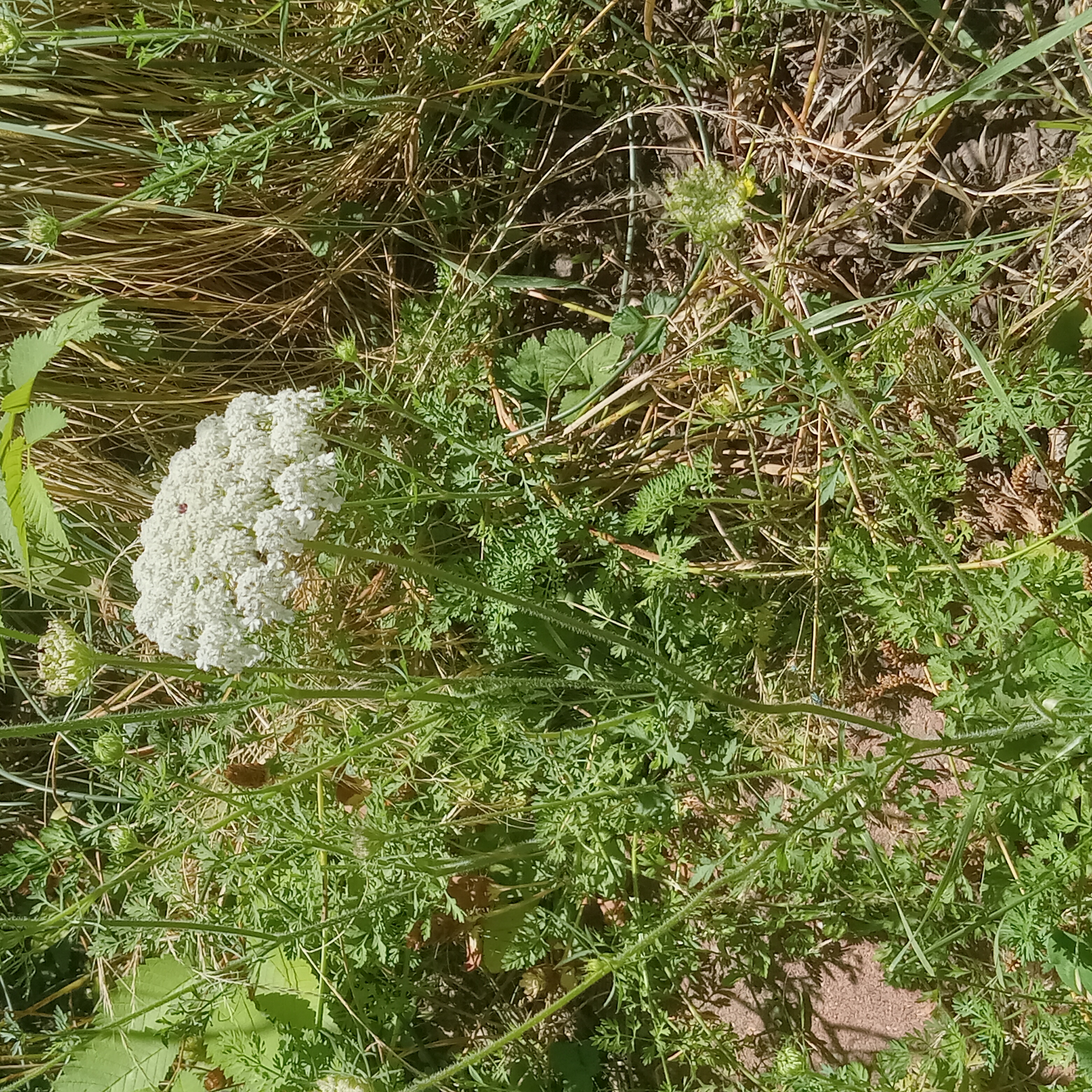Queen Anne's Lace:
The Carrot's Royal Cousin

---
Ah, the wild carrot- Daucus carota. He is a dainty thing, and kindly- his flowers give a creamy, off-white color to dyes, and the root from which he grows is just as edible as his cultivated cousin, if slightly more bitter. He also has had a long career in contraception and abortifaacience-- but in the modern world, there are far more reliable substitutes, and the men of science have all but ruled out his ability to effectively carry out this task.
Despite this scattered history, our friend's tastes have always been on the milder side- on my homeworld, he grew first in Africa and Eurasia, and has somewhat easily harmonized with the native plants of the Americas. His beauty is accentuated by a tiny red bud in the center of his white collar of umbels, colloquially called the "ruby" atop a hairy green stem that winds high above his triangulate leaves. He has been given a few little names: the most common being Queen Anne's Lace, but he is also referred to as bird-nest or bishop's lace. It gives him a wondrously benevolent reputation, and one that he has earned, as you will soon see.
The wild carrot attracts a trail of couriers wherever he grows- in his homeland, wasps come to pollinate him and the plants aroud him, though if he is forced to grow elsewhere, this habit seems to drop away; he is much like a curious and sociable gentleman, who gets along well with all of his friends, but feels wildly out-of-place in environs where he is not well-known. Blueberries manage to bring out this better nature in him, and tomatoes and lettuce, also, it seems- they all benefit from his presence with increased yield, and he is ever happy to help. Yet farmers outside his native land regard him as pestilent-- and to learn why, one must look no farther than his wicked twin: poison hemlock.
Hemlock looks much like our distinct ruby-clad gentleman here; but their stem is blotched with dark purple sins, and lacks the hairs of their doppelganger; and their leaves are more spatulate, and their neck is not adorned with the undercollar of the wild carrot- lacking also the ruby at the center of its clustered flowers. Indeed, it seems that hemlock is wild carrot with everything dainty and neat stripped away- a mad dark echo of our distinguished friend. Watch out, therefore, when digging his roots to eat or picking his flowers, that the plant you hold is a real wild carrot- nature, ever elusive, has set a trap for the foolhardy and inattentive.